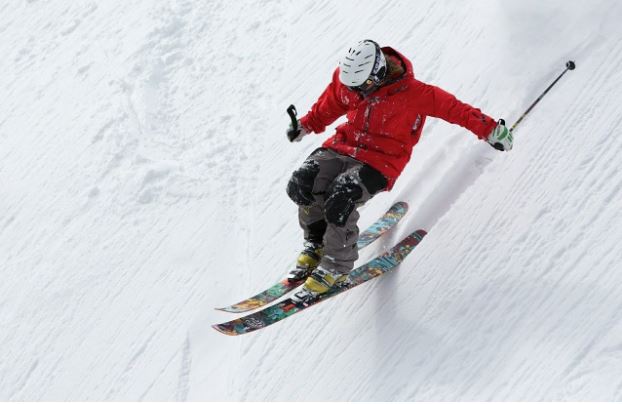
When you’re going skiing or snowboarding, it’s important to get the right equipment, so you stay warm, stay safe and most importantly, you can see where you’re going.
Surprisingly, snowy places are not devoid of sunlight. In fact, because of the white ground, the sun can almost blind you if you’re not careful.
To help you get the best ski goggles, we have put together a little guide.
Is There A Difference Between Ski Goggles and Snowboard Goggles?
No, there isn’t a difference between ski goggles and snowboarding goggles. They are both designed to create a suction effect, helping them stay on your face. They are durable, which is perfect for your inevitable falls, and they are designed to give you a large view of your surroundings while protecting you from the sun.
If you notice a brand is selling both ski and snowboarding goggles in separate sections of their website, they are probably just trying to attract different customers. You can safely buy either goggles for your trip.
Ski And Snowboard Lens Shapes
Ski goggles often come in two lens shapes, these are spherical or cylindrical.. That being said, many manufacturers use their own terms for these two lens types, adding extra flavor and enticing language to suggest they are offering you something new.
To help you understand what these lens types are, we’ve created a little definition.
Spherical Lenses
Spherical lenses are almost in the shape of a circle. They curve around your eyes horizontally, but they also curve around your face vertically too. The vertical addition is what gives the lens the spherical shape.
This type of lens offers you better peripheral vision, as the circular shape follows with your natural eye sight. It also creates less of a glare and gives you less distortion, again this is because the circular shape matches the way your eyes see the world.
Because these lenses offer great visual aid, they are often more expensive.
Cylindrical Lenses
Cylindrical lenses also curve horizontally across your face, but they don’t curve vertically. This means that the material from your forehead to your nose will be flat. Because of their flat nature, some manufacturers call them flat lens goggles.
The flat lens offers no benefits apart from its price tag. Because less technology has been used to create these lenses, you can get them at a cheaper price. However, you can expect more glare and a harsh block in your peripheral vision.
Our Advice
We suggest buying spherical lenses because they are undoubtedly the best option, however, if their price tag is too high, the cylindrical lens will still work fine.
Ski And Snowboard Ventilation
If you are skiing or snowboarding, you’ll be surrounded by a cold landscape as your body heats up from your activity. This natural combination of hot and cold will cause condensation to form inside your goggles.
Because of this, snow activity manufacturers use different types of vents to prevent your goggles from fogging up.
Some manufacturers call these vents by their real name “ventilation features”; others like to be more dramatic and call them “anti-fogging technology.” Either way, here are your options:
Anti-Fog Coating
You can expect all snow goggles to have a layer of anti-fog coating, however, some of the cheaper options will only have this protection. The technology can be painted onto your goggles and used as a top-up if your old equipment is starting to fog up.
Double Layered Lenses
Because of the additional barrier and the sealed suction around your face, these goggles create a thermal barrier. This means that it becomes more resistant to fogging than those with just a single layer.
Most mid-tier goggles will have this double layering feature, along with the anti-fog coating.
If the seal or the layers break, the effect will be broken too.
Fans
A couple of super-high-end goggles will include fans, batteries, and controllers to remove the moisture that will naturally occur. The controller can adjust the fans as you are taking the lift line and don’t need the protection, then move to faster movements as you go down the slope.
These fans are the best way to avoid fogging, however, they are very expensive.
Vents
Vents are second best to fans, and they are cheaper because they do not have any active technology. Instead, you can open the vents (the wider, the better) to allow the airflow to circulate around the goggles. This will allow your body to cool down and the moisture to escape.
The only downside is your face will get cold. If you are skiing in extreme temperatures, this could become a problem.
Summary
Knowing your budget, you can now pick the best ski and snowboarding goggles available to you. You can also avoid any seller trying to use dramatic language to make their product seem better than it is.
You may be interested in: Skiing for beginners: essential materials to bring along

